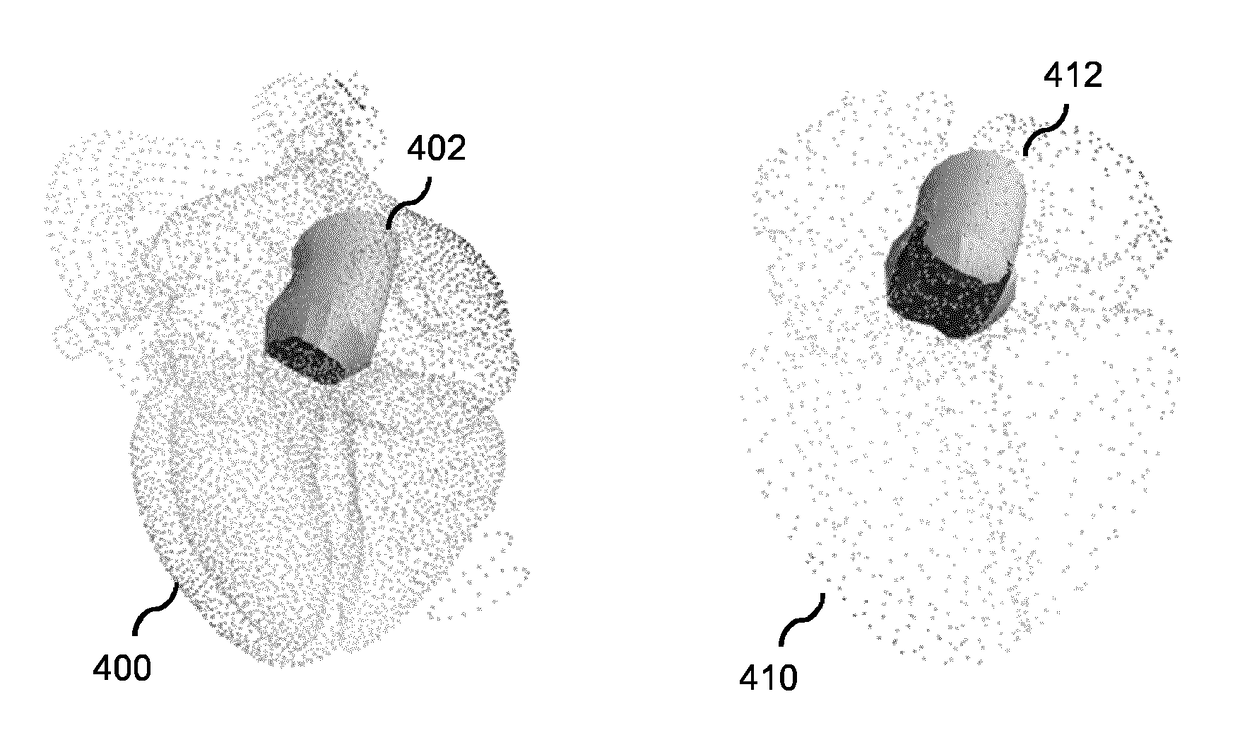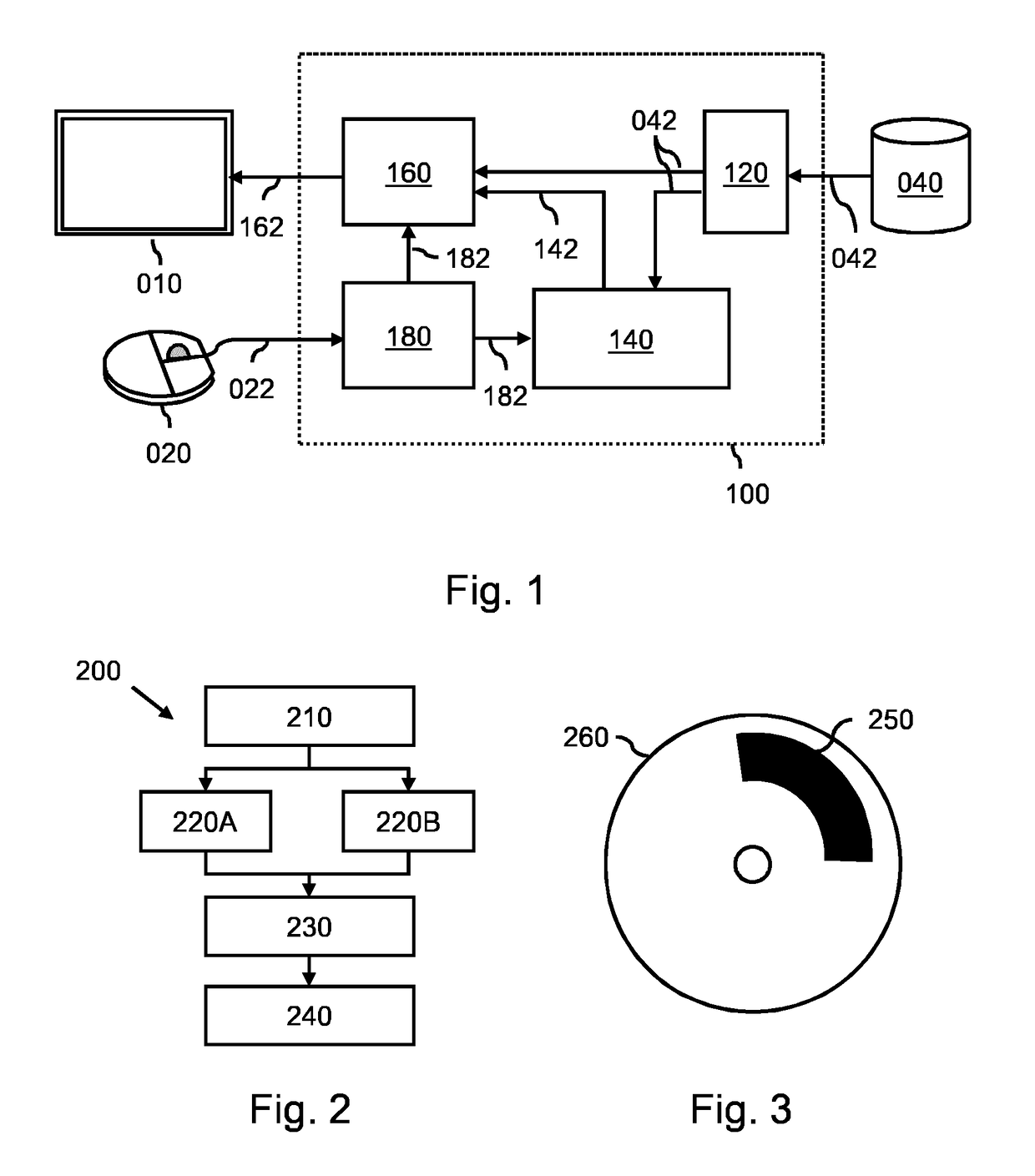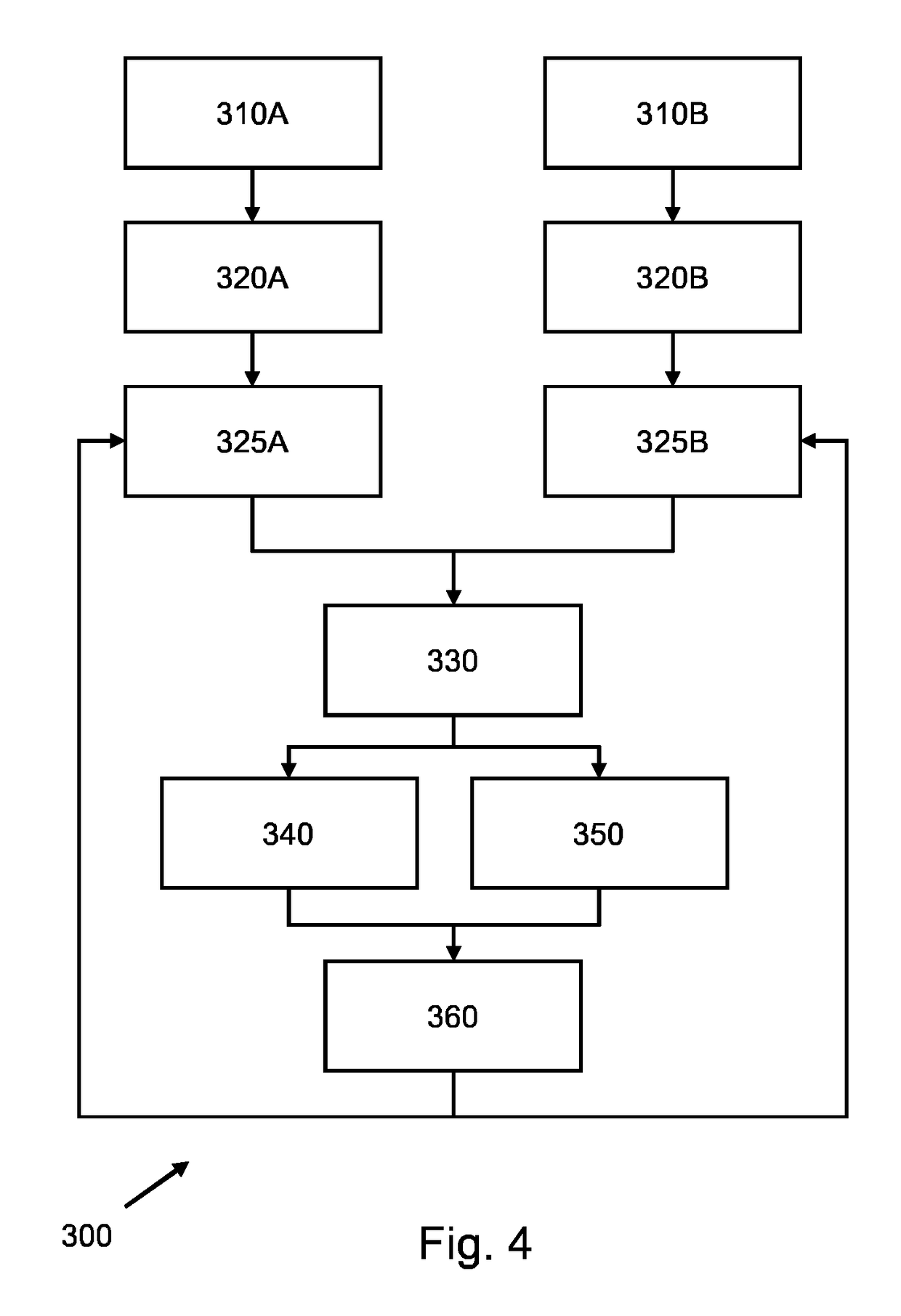Model-based segmentation of an anatomical structure
a model-based segmentation and anatomical structure technology, applied in image generation, image enhancement, instruments, etc., can solve the problem of user with insufficient comprehensive understanding of anatomical structure, and achieve the effect of reducing the cognitive burden of interpreting the discrepancy and the cognitive burden of interpreting the displayed imag
- Summary
- Abstract
- Description
- Claims
- Application Information
AI Technical Summary
Benefits of technology
Problems solved by technology
Method used
Image
Examples
Embodiment Construction
[0053]FIG. 1 shows a system 100 for fitting a deformable model to an anatomical structure in a medical image to obtain a segmentation of the anatomical structure. The system 100 comprises an image interface 120 for obtaining a first medical image of a patient and a second medical image of the patient. Both medical images show the anatomical structure and having been acquired by different medical imaging modalities or medical imaging protocols, thereby establishing a different visual representation of the anatomical structure in both medical images. FIG. 1 shows the image interface 120 obtaining the medical images in the form of image data 042 from an external database 040, such as a Picture Archiving and Communication System (PACS). As such, the image interface 120 may be constituted by a so-termed DICOM interface. However, the image interface 120 may also take any other suitable form, such as a memory or storage interface, a network interface, etc.
[0054]The system100 further compri...
PUM
 Login to View More
Login to View More Abstract
Description
Claims
Application Information
 Login to View More
Login to View More - R&D
- Intellectual Property
- Life Sciences
- Materials
- Tech Scout
- Unparalleled Data Quality
- Higher Quality Content
- 60% Fewer Hallucinations
Browse by: Latest US Patents, China's latest patents, Technical Efficacy Thesaurus, Application Domain, Technology Topic, Popular Technical Reports.
© 2025 PatSnap. All rights reserved.Legal|Privacy policy|Modern Slavery Act Transparency Statement|Sitemap|About US| Contact US: help@patsnap.com



